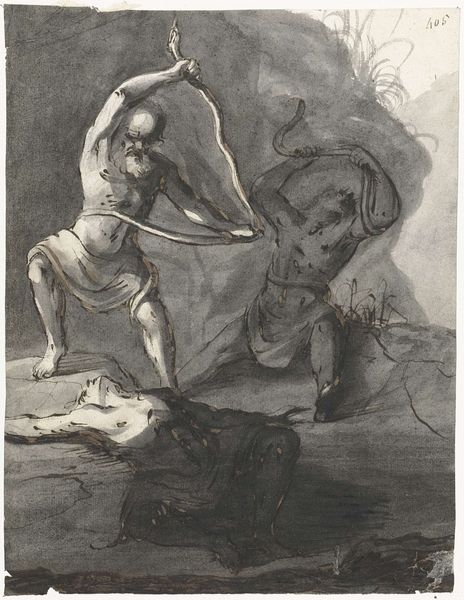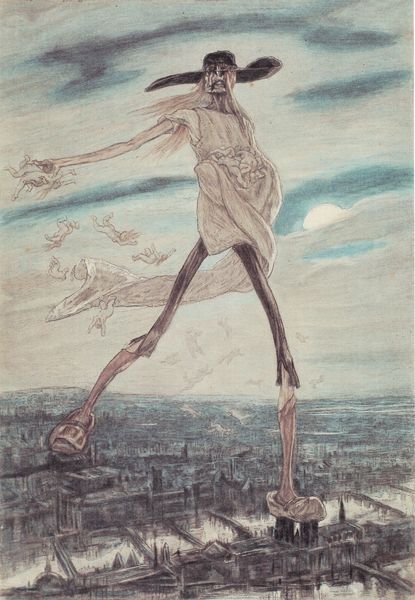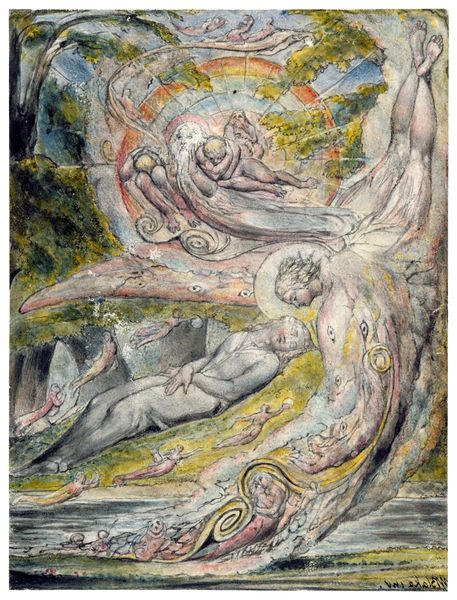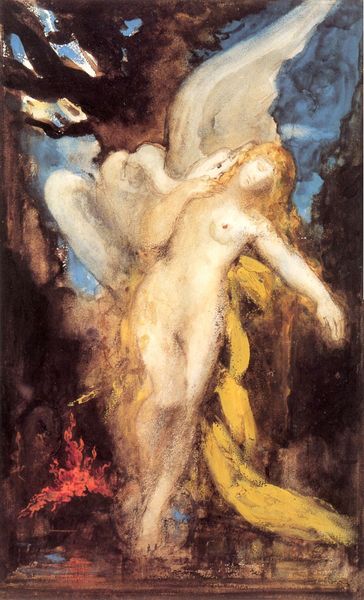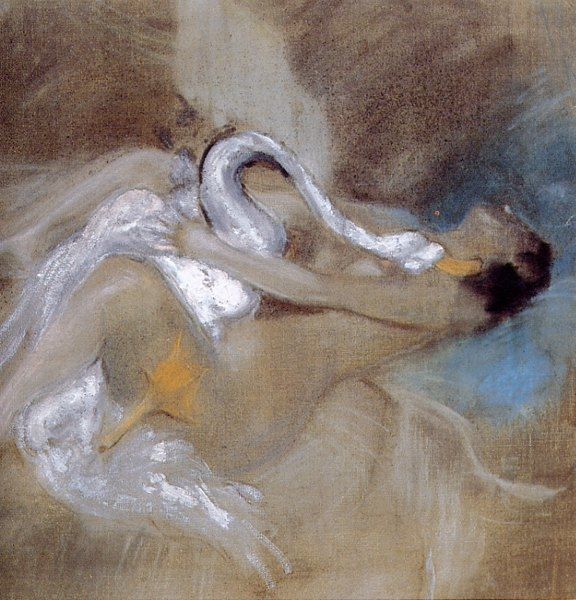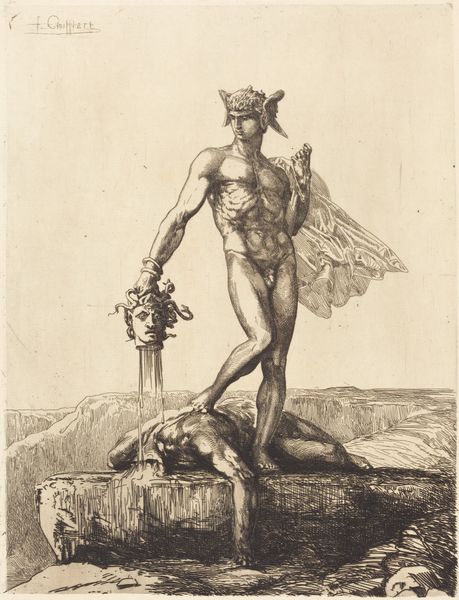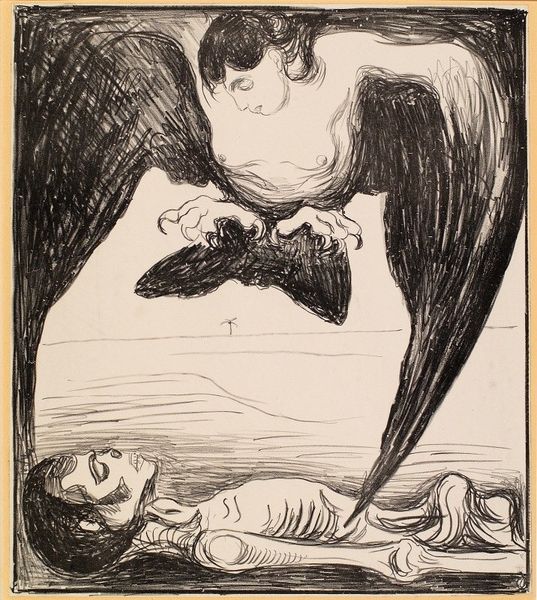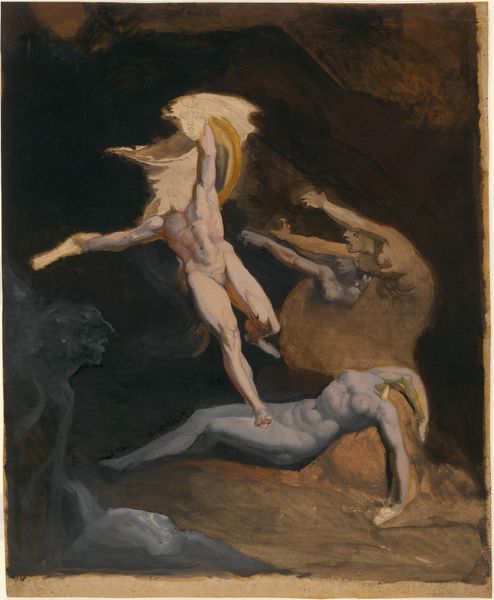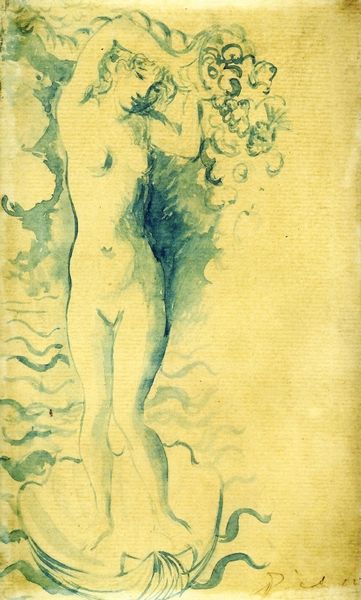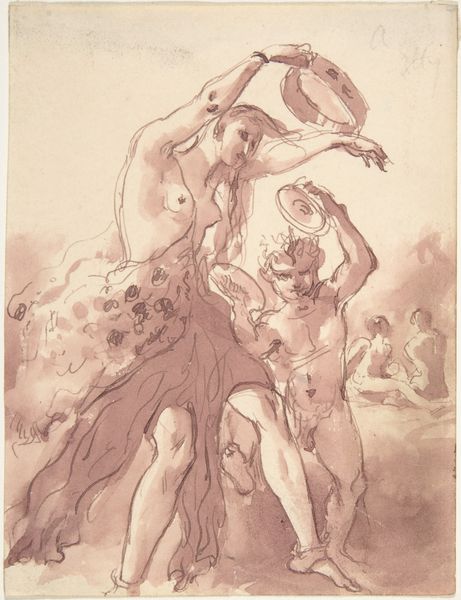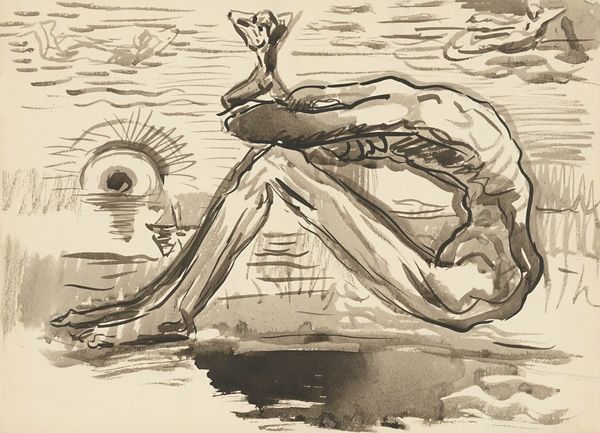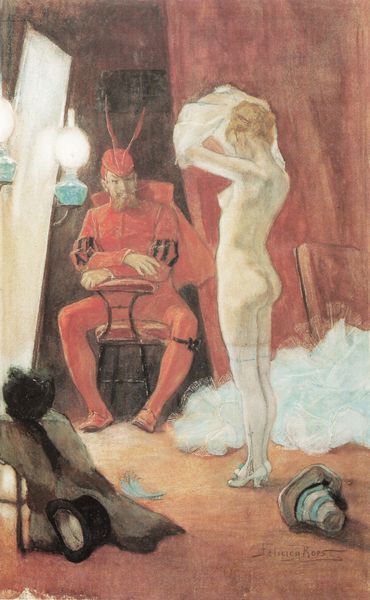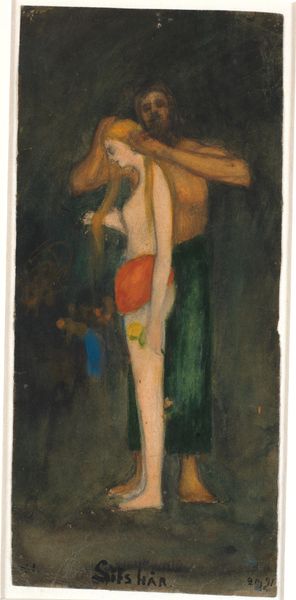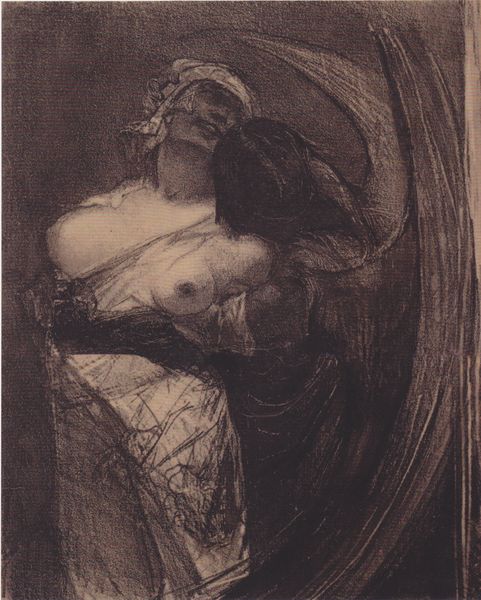
drawing, etching, pastel
#
drawing
#
allegory
#
etching
#
figuration
#
pastel chalk drawing
#
mythology
#
symbolism
#
pastel
#
history-painting
#
nude
#
watercolor
#
erotic-art
Dimensions: 25.8 x 18 cm
Copyright: Public domain
Curator: Ugh, it’s like a fever dream manifested onto paper. Gives me the shivers in the best, most unsettling way. Editor: And those shivers, I wager, are precisely what Félicien Rops intended when he created this piece, "The Sacrifice," from "The Satanic Ones" series in 1882. The medium, a delicate blend of pastel and etching, only amplifies the disturbing allure. Curator: It’s heavy. Literally heavy. All those sickly greens and grays swirling behind... she’s trapped, isn't she? Trapped under the weight of that…thing. The animal skull? But the halo above it throws me off; like some dark parody of sacred art. Editor: A fitting description. Rops challenges our notions of morality, positioning female sexuality within a complex web of societal critique. Consider the imagery: the prone nude female, yes, seemingly offered as a sacrifice atop that altar. Yet, it's not mere submission we witness. Look closer. There’s defiance in her gaze. And the figures etched onto the altar beneath her appear more enslaved by dogma than she does. Curator: Oh, I see what you mean! The winged skeletal babies—are they cherubs gone wrong? They give off such a cynical, twisted vibe; very opposite to the ethereal. They look almost trapped themselves. What is she sacrificing, actually? I guess what is more her agency? Or, her...soul, perhaps? Editor: It is the subjugation of the female spirit by patriarchal structures, cloaked in religious and moral righteousness, that Rops critiques. Notice how the serpent emerges from the woman’s form? Some might say phallic imagery, I agree, but I would add it underscores female knowledge, desire, the power that society fears. The 'sacrifice' becomes, not a literal offering, but a potent symbol of constrained liberation. Curator: He uses the colors cleverly. That teal draped across her feels like a promise, like a little hint that rescue may come, despite it all. I wonder if he saw himself as a savior for those silenced voices. Did he ever talk about his intention for it? Editor: While Rops remained relatively taciturn regarding explicit interpretations, his involvement with avant-garde circles provides context. He was challenging bourgeoisie morality; advocating free thought while challenging perceptions of feminine passivity. “The Sacrifice” becomes a catalyst, not a declaration. Curator: Definitely left me squirming. Art with a real bite! You know, it also sparked something... Made me think about how far we still must to move towards liberation... Even when we *think* we're already free... Editor: And therein lies its power: a persistent mirror reflecting our societal anxieties. Let's carry that disquiet forward, shall we?
Comments
No comments
Be the first to comment and join the conversation on the ultimate creative platform.
